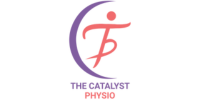Introduction

Welcome to our comprehensive guide on back pain physiotherapy at home, where we delve into effective strategies to alleviate discomfort and promote healing. Back pain is a common ailment that can significantly impact daily life, and our goal is to equip you with practical, at-home solutions that rival professional interventions.
Welcome to a transformative journey towards a pain-free life. In this guide, we explore the world of back pain physiotherapy at home, a comprehensive approach to addressing and alleviating the discomfort that often accompanies this common ailment.
Back pain, whether acute or chronic, can significantly impact daily life, hindering mobility and diminishing overall well-being. The hustle and bustle of modern life, coupled with sedentary habits and poor posture, contribute to the prevalence of this issue. The good news is that relief is within reach, and you can take proactive steps from the comfort of your home.
Tailored Solutions for Every Need
As we progress, anticipate a detailed exploration of targeted stretches, exercises, and lifestyle adjustments. Whether you’re grappling with lower back pain, or upper back discomfort, or seeking preventive measures, our guide caters to a spectrum of needs. Your unique journey to relief begins with understanding your pain and applying the right solutions.
Holistic Healing: Mind and Body Connection
Beyond the physical realm, we’ll delve into the powerful connection between mind and body. Yoga poses designed for back pain, coupled with mindfulness techniques, offer a holistic approach. By incorporating these practices, you not only address the symptoms but cultivate a resilient and balanced state of being.
Tools of Empowerment
Expect insights into innovative tools that can elevate your at-home physiotherapy experience. From heat and cold therapy to the benefits of foam rolling, these tools become allies in your journey to lasting relief. Discover how to harness their potential and integrate them seamlessly into your daily routine.
Building a Foundation: Core Strength and Posture
A resilient back starts with a strong core and mindful posture. We’ll guide you through exercises that enhance core strength, providing essential support to your spine. Additionally, explore the importance of sitting ergonomics and how small adjustments can prevent undue stress on your back during daily activities.
Understanding Back Pain
Before we embark on the journey of at-home physiotherapy, it’s crucial to grasp the nuances of back pain. From sedentary lifestyles to poor posture, various factors contribute to this discomfort. Our approach involves acknowledging the root causes, ensuring a more targeted and successful intervention.
Assessing Your Pain
Recognizing Pain Types
Differentiating between acute and chronic back pain is the first step in tailoring your physiotherapy routine. Acute pain often stems from sudden injuries, while chronic pain persists over an extended period. Identifying your pain type allows for a more nuanced and personalized approach.
Tailored Physiotherapy Exercises
Exercise 1: Cat-Cow Stretch
One effective exercise for alleviating back pain is the Cat-Cow Stretch. Start on your hands and knees, arching your back like a cat and then dipping it down like a cow. This dynamic stretch helps to improve flexibility and reduce tension in the spine.
Exercise 2: Pelvic Tilts
Pelvic tilts are another valuable addition to your at-home physiotherapy routine. Lie on your back with knees bent, gently tilting your pelvis upward and downward. This motion strengthens the core muscles, providing support to your lower back.
Ergonomic Adjustments
Optimizing Your Workspace

A significant contributor to back pain is an improperly designed workspace. Whether working from home or in an office, make ergonomic adjustments such as maintaining an upright posture, using a supportive chair, and positioning your computer at eye level. These small changes can have a profound impact on reducing back strain.
Incorporating Lifestyle Changes
Hydration and Nutrition
Believe it or not, what you consume plays a crucial role in back health. Ensure you maintain proper hydration and incorporate foods rich in anti-inflammatory properties, such as omega-3 fatty acids found in fish and flaxseeds. A well-balanced diet supports the body’s natural healing processes.
Adequate Rest
Ample rest is often underrated in the realm of back pain management. Ensure you invest in a supportive mattress and prioritize a good night’s sleep. Quality rest fosters the body’s ability to repair and rejuvenate, crucial for those grappling with persistent back discomfort.
Seeking Professional Guidance
While our guide empowers you to take control of your back pain at home, it’s essential to recognize when professional intervention is necessary. Consulting with a physiotherapist can provide tailored exercises and additional insights based on your specific condition.
Targeted Stretches for Specific Regions
Exercise 3: Child’s Pose
For individuals experiencing lower back pain, the Child’s Pose is particularly effective. Begin on all fours, then gently sit back, reaching your arms forward and lowering your chest towards the ground. This stretch elongates the spine, relieving tension in the lower back.
Exercise 4: Thoracic Rotation
To address discomfort in the upper back, incorporate the Thoracic Rotation exercise. While seated or standing, interlace your fingers and rotate your torso gently from side to side. This movement enhances flexibility in the thoracic spine, promoting overall spinal health.
Mind-Body Connection: Yoga and Meditation
Yoga Poses for Back Pain

Integrating yoga into your routine can significantly contribute to back pain management. Poses like the Downward-Facing Dog and Cobra Pose help strengthen core muscles and improve flexibility, fostering a healthier spine.
Mindful Meditation
Beyond physical exercises, consider the impact of stress on back pain. Engage in mindful meditation techniques, such as deep breathing or guided imagery, to alleviate stress-induced muscle tension. A calmer mind often translates to a more relaxed and pain-free back.
Innovative Tools for Home Physiotherapy
Heat and Cold Therapy
Harness the power of temperature therapy to address back pain. Apply a heat pack to relax muscles and improve blood circulation. Conversely, a cold compress can reduce inflammation and numb localized pain. Alternate between the two for a comprehensive approach.
Foam Rolling
Invest in a high-quality foam roller to target specific muscle groups. Rolling gently over areas of tension aids in breaking down knots and enhancing flexibility. Regular use of a foam roller complements your physiotherapy routine, promoting long-term relief.
Building Core Strength
Exercise 5: Plank Variations
A strong core is a foundation for a healthy back. Incorporate plank variations, such as side planks and forearm planks, into your routine. These exercises engage core muscles, providing essential support to the spine and reducing the risk of future discomfort.
The Importance of Posture
Sitting Ergonomics

In the digital age, where prolonged sitting is common, paying attention to sitting ergonomics is crucial. Keep your feet flat on the ground, maintain a neutral spine, and position your computer at eye level. These adjustments prevent undue stress on the back, promoting a pain-free sitting experience.
Consistency Is Key
While these advanced techniques offer a more targeted approach to back pain physiotherapy at home, consistency remains paramount. Dedicate time each day to your personalized routine, and monitor the gradual improvements in your back health.
Final Thoughts
In this extended guide, we’ve explored additional exercises, mind-body techniques, and innovative tools to elevate your back pain physiotherapy at home. By incorporating these advanced strategies into your routine, you’re not just addressing symptoms but actively promoting a resilient and healthier spine.
Conclusion
In this guide, we’ve explored a holistic approach to back pain physiotherapy at home. By combining targeted exercises, ergonomic adjustments, and lifestyle changes, you can unlock relief and regain control over your well-being. Remember, consistency is key, and these practices are designed to empower you on your journey to a pain-free life.
In concluding our comprehensive guide on back pain physiotherapy at home, we want to emphasize the empowerment that comes with taking control of your well-being. By incorporating targeted exercises, mindfulness practices, and innovative tools into your daily routine, you’re not merely managing symptoms but actively fostering a resilient and healthier spine.
Remember, the key to success lies in consistency. Dedicate time each day to the personalized physiotherapy routine we’ve outlined, and observe the gradual transformations in your back health. From stretching exercises that target specific regions to the mind-body connection through yoga and meditation, every element plays a vital role in your journey to lasting relief.
As you navigate this path to a pain-free life, it’s essential to listen to your body and understand its unique needs. While these at-home techniques are powerful, they complement rather than replace professional advice. If your back pain persists or worsens, consulting with a physiotherapist ensures a tailored approach based on your specific condition.
In the realm of back pain management, the holistic approach we’ve presented goes beyond quick fixes. It’s about cultivating habits that support your spine, whether through proper ergonomics, core-strengthening exercises, or the therapeutic benefits of heat and cold therapy. Your commitment to these practices forms the foundation for a resilient and pain-free future.
Frequently Asked Questions (FAQs) – Back Pain Physiotherapy at Home
- Can at-home physiotherapy truly alleviate back pain?
- Absolutely. A well-structured at-home physiotherapy routine, consisting of targeted exercises, ergonomic adjustments, and lifestyle changes, can significantly alleviate back pain. Consistency is key to experiencing lasting relief.
- How do I determine the right exercises for my back pain?
- Identifying the type of back pain (acute or chronic) is the first step. Tailor your exercises based on your pain type and consult with a physiotherapist if needed. Our guide provides a variety of exercises to address different regions of the back.
- Can yoga really help with back pain?
- Yes, yoga is a powerful tool for back pain management. Poses like the Downward-Facing Dog and Cobra Pose strengthen core muscles and improve flexibility, contributing to a healthier spine.
- Are heat and cold therapy effective for back pain?
- Yes, both heat and cold therapy play crucial roles in managing back pain. Applying a heat pack helps relax muscles, while a cold compress reduces inflammation. Alternating between the two can provide comprehensive relief.
- How long should I dedicate to my at-home physiotherapy routine?
- The duration can vary based on individual needs, but consistency is more important than duration. Aim for at least 15-30 minutes daily, adjusting as needed to fit your schedule.
Dr. Priyanka Bharadwaj (Physiotherapist)
Introducing CB Home Physiotherapist: Meet Dr. Priyanka Bharadwaj, a highly skilled female physical therapy expert based in Khanpur, Delhi. She brings her expertise right to your doorstep, offering personalized physiotherapy services in Khanpur and nearby areas.
With a solid background in home physiotherapy, Dr. Priyanka specializes in treating a wide range of conditions, including back pain, neck pain, knee pain, sciatica, and more. She’s also adept at post-surgery rehabilitation, helping patients recover from procedures like shoulder, knee, and hip replacements.
In addition to her two years of experience in hospitals and clinics, Dr. Priyanka has honed her skills in various specialties such as pediatric, geriatric, neurological, and musculoskeletal physiotherapy. Whether it’s helping children regain mobility or assisting seniors with balance issues, she’s dedicated to improving her patients’ quality of life.
Dr. Priyanka holds a Bachelor’s degree in Physiotherapy from the Manav Rachna International Institute of Research and Studies. Her compassionate approach and commitment to patient well-being make her a trusted choice for anyone seeking expert physiotherapy care in the comfort of their own home.

